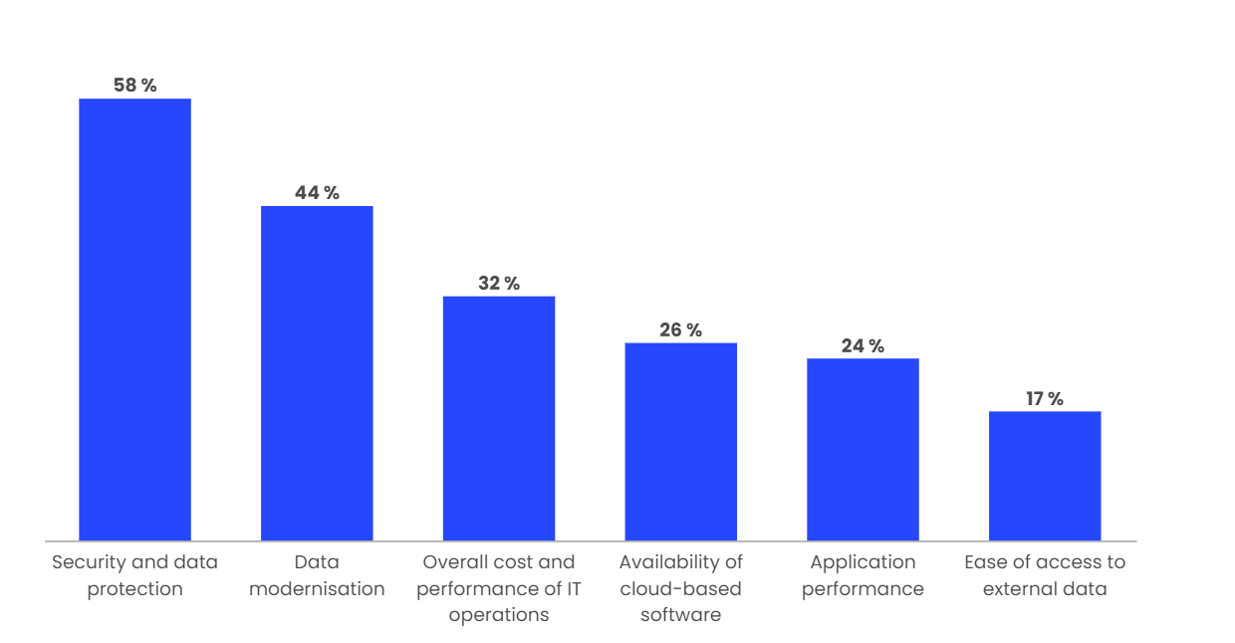Key Cloud Strategies to Generate ROI

The enterprise need for cloud infrastructure and services continues to grow at a rapid pace, due to a number of factors driving cloud adoption. Global spending on public cloud services is currently forecast to grow by 23.1% by the end of this year compared to 2020, reaching a total of $332.3 billion.
Main drivers for moving to a cloud-based IT architecture cloud-based IT architecture

Often the adoption of this strategy is not well organised by companies seeking an ROI that capitalises on technology. As a result, without a well-defined strategy, companies may not achieve their intended goals.
Generally, companies tend to think that moving workloads to the cloud can reduce IT costs by eliminating on-premises infrastructure investments. When the process is done properly, this is true, but if it is done in an uncontrolled manner, costs rise.
At this point, the question arises as to whether mass migration to the cloud is a good strategy. Several reports find that cloud deployments can deliver up to four times the ROI compared to on-premises workloads, thanks to the functionality, agility and ease of use benefits of a cloud architecture.
At least 55% of companies use multi-cloud models and 21% rely on at least three cloud systems, adding complexity to the way they manage their multi-cloud environments, resulting in hidden costs and difficulties in maintaining these hybrid environments. A properly managed cloud strategy can optimise costs, but only if control and optimisation of the procured architecture is established.
Issues facing companies migrating to the cloud
Cost management models are typically budgeted on a quarterly or annual basis, but such a model is not the most appropriate for cloud migration, as its payment mechanisms are on a pay-as-you-go basis. Factors influencing the hidden costs of cloud adoption strategies include:
- The emergence of new services and applications can create unexpected demand, leading to increased usage and related cost increases. Migration to the cloud results in the addition of new services, such as disaster recovery, which are cheaper in the cloud than for on-premises applications, but increase the cost.
- Cloud sprawl arises when there is no plan of action for commissioning. If the plan is not well-defined and is drawn out over time, the constant preparation of virtual machines or experimental databases will end up being a problem in the long run.
- As multi-cloud environments grow, organisations tend to stop paying attention to the location of workloads. For example, if a department in any enterprise has ten applications spread across four clouds and on-premises systems, they will end up incurring unforeseen outbound charges as transactional data is constantly moved across different environments.
Thus, services migrating to the cloud need an action plan in which budgets and expenditure control are established, along with an alert system when actual costs exceed expected costs.
ROI generation strategies
Tagging workloads to the cloud often takes a lot of effort and can cause companies to abandon the migration altogether, but at that point, trying to return to on-premises can result in high losses.
Modernisation tools, analysis, prioritisation of applications and proper planning are key to trying to generate the greatest ROI from cloud migration. Aspects to consider as a strategy include:
- Conduct a comprehensive analysis of application status: the company should identify which applications are the highest priority for migration, achieving technical cost management. An application ecosystem should be mapped to the most appropriate migration approach with a clear understanding of the ROI of each approach.
- Identification and use of automation tools: these tools help facilitate digital transformation by speeding up the process. Manual efforts have proven to be expensive, slow and risky.
- Getting cloud providers to invest in the company’s success: making it easier for cloud providers to move workloads in exchange for helping to modernise applications and systems generates a higher return.
- Establish a balanced migration strategy: the maximum ROI is neither in migrating legacy applications and workloads to the cloud. The optimal mix is in the development of cloud-native applications along with the elevation of existing ones and their modernisation.
- Implement and carry out a tagging strategy: all resources should be tagged and connected to a specific business programme, generating a basic accounting of resource utilisation by business unit, application and individuals using the services. To obtain long-term ROI, a chargeback programme needs to be implemented.
- Setting alerts: setting thresholds for the use of cloud resource applications is appropriate if a department exceeds the budget, so that an alert is triggered to see if the additional cost is legitimate or if it is related to an error.
- Generation of an optimisation team: this involves the creation of a team focused on cloud cost optimisation, whose role is to look for opportunities to optimise the architecture of the entire business and decide whether paying for or investing in auto-scaling is the most appropriate strategy.
- Choose chargeback models for cloud resources: this is a way for the IT department not to be the only one taking risks. For example, if e-commerce applications are being developed by misusing queries, resources are consumed and the cost of these resources will be associated with the e-commerce team.
The case for cloud ERP platforms and ROI
In distribution, most US distributors have either moved to a cloud-based ERP platform or plan to do so in the near future. Such platforms mean that functions are always up to date, there is better efficiency of IT staff, and there is better uptime and security.
Looking ahead, ideally, cloud-based ERP should be universally adopted within the next decade. Trying to calculate the ROI for this type of migration may seem complicated, but it is not. Financial payback can be generated in a short order as long as improvements are estimated and general assumptions are applied.
Revenue momentum, cost savings, improved quality and performance, reduced capital requirements and cloud savings are the key elements that drive cloud ROI. In addition, there are the benefits of ease of use, customer satisfaction and improved quality of work.
It is estimated that companies that engage the full range of ERP technology in the cloud reap an estimated reward of more than $1,500 per user. This cost reduction combined with other benefits of ERP systems can generate an annual ROI of more than $3,000 per user.
Conclusions
As with any strategy to be implemented by a company, the process of migration to the cloud must establish the start of the transformation, define the objectives, analyse and determine which tools are necessary and available on the market to initiate this strategy.
To carry out these processes, the state of the business and the use of technology that the company can cover must be known, with clear and realistic objectives, and identifying the right team or teams to lead the transformation.
In conclusion, obtaining a successful ROI will not be a simple process because it requires an assessment of the applications that exist within the company and how much technical debt has been accumulated. Companies need to be aware of the tools that are available in the market and will be valuable and viable depending on the needs and strategy adopted.


